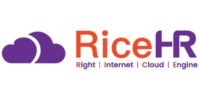Subtitle: Embracing Change and Ensuring Financial Stability in the Ever-Evolving World of Payroll Taxes
In the intricate dance of financial management, few elements are as dynamic and crucial as payroll taxes. The landscape of payroll tax regulations is ever-evolving, demanding vigilance and adaptability from employers. This blog post serves as a comprehensive guide to staying informed and compliant with the latest payroll tax updates, offering insights into the importance of proactive measures and strategies for navigating the complexities of change.
The Dynamic Nature of Payroll Tax Regulations
In the world of payroll, change is constant. Legislative updates, amendments to tax codes, and shifts in economic landscapes contribute to the dynamic nature of payroll tax regulations. Employers must recognize the importance of staying informed about these changes to ensure compliance and financial stability.
1. Tax Law Changes
Federal and state tax laws are subject to frequent revisions, impacting various aspects of payroll, including income tax rates, deductions, and credits. Staying abreast of these changes is crucial for accurate tax withholdings and compliance.
2. Economic Influences
Economic shifts, such as changes in inflation rates, unemployment, and government fiscal policies, can have direct implications for payroll taxes. Employers must be attuned to economic indicators that may influence tax rates and thresholds.
3. Regulatory Updates
Government agencies regularly issue updates and amendments to payroll tax regulations. Employers need to monitor announcements from entities such as the IRS and state tax departments to stay informed about changes in reporting requirements and compliance obligations.
The Importance of Proactive Measures
1. Early Awareness for Strategic Planning
Proactivity is key when it comes to payroll tax updates. Employers who are aware of impending changes can strategize early, adapting their payroll processes to align with new regulations and minimizing the risk of compliance errors.
2. Mitigating Risks and Penalties
Staying ahead of payroll tax updates helps mitigate the risks associated with non-compliance. Timely implementation of changes reduces the likelihood of errors and penalties, safeguarding the financial health of the organization.
Strategies for Staying Informed
1. Continuous Education
Establishing a culture of continuous education within the payroll department is essential. Regular training sessions for payroll professionals ensure they are well-informed about the latest tax laws, compliance requirements, and best practices in payroll management.
2. Collaborate with Tax Professionals
Engaging with certified tax professionals provides organizations with a valuable resource for navigating complex tax landscapes. Tax experts can offer strategic advice, interpret regulatory changes, and assist in the implementation of compliant payroll practices.
3. Leverage Technology
Incorporating advanced payroll software and technology solutions can streamline the process of adapting to tax updates. Automated systems can facilitate accurate calculations, generate updated reports, and ensure timely compliance.
Navigating the Implementation Process
1. Conduct a Compliance Review
When tax updates are announced, conduct a comprehensive review of existing payroll processes to identify areas that need adjustment. This includes evaluating tax withholding calculations, reporting procedures, and record-keeping practices.
2. Communicate Changes Effectively
Transparent communication with employees about tax updates is crucial. Clearly communicate any changes in tax withholdings, reporting requirements, or other relevant information to ensure awareness and avoid misunderstandings.
3. Test Systems and Processes
Before full implementation, conduct thorough testing of updated systems and processes. This ensures that the changes are seamlessly integrated, reducing the risk of disruptions and errors in live payroll operations.
Conclusion: Mastering the Art of Adaptation
In the intricate realm of payroll tax management, mastering the art of adaptation is not just a skill; it’s a strategic advantage. By staying informed about payroll tax updates, embracing proactive measures, and implementing effective strategies, employers can navigate the complexities of change with confidence. In a world where compliance is non-negotiable, organizations that prioritize staying informed and adapting to evolving tax landscapes position themselves for financial stability and success in the intricate dance of payroll management.
